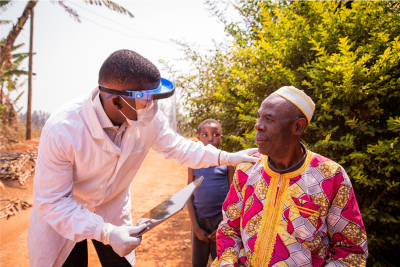Press Releases
ATLANTA, April 4, 2024 — The American Cancer Society (ACS) today released Global Cancer Statistics, 2024, the organization’s report on global cancer facts and trends. According to the findings, an estimated 20 million cancer cases were newly diagnosed in 2022 and 9.7 million people died from the disease worldwide. By 2050, the number of cancer cases is predicted to reach 35 million.
This important report, authored by ACS researchers and the International Agency for Research on Cancer (IARC), is published today in CA: A Cancer Journal for Clinicians, along with a consumer-friendly companion publication, Global Cancer Facts & Figures 5th Edition. The studies rely on the worldwide estimates of cancer incidence and mortality produced by the IARC, the cancer agency of the World Health Organization (WHO).
“This rise in projected cancer cases by 2050 is solely due to the aging and growth of the population, assuming current incidence rates remain unchanged,” said Dr. Hyuna Sung, senior principal scientist, cancer surveillance at the American Cancer Society and co-author of the report. “Notably, the prevalence of major risk factors such as consumption of unhealthy diet, physical inactivity, heavy alcohol consumption, and cigarette smoking are increasing in many parts of the world and will likely exacerbate the future burden of cancer barring any large scale interventions.”
Other key findings from the report include:
- Every day in 2022, approximately 1,800 women were diagnosed with cervical cancer and almost 1,000 women died from the disease worldwide. Cervical cancer continues to be the leading cause of cancer death in women in 37 countries in sub-Saharan Africa and in Latin America. Incidence rates are highest in Eswatini, Zambia, Malawi, Zimbabwe, and Tanzania (65 to 96 per 100,000), 10 to 16 times higher than in the United States (6 per 100,000).
- Globally, only 15% of eligible girls have received the vaccine against the human papillomavirus (HPV), with coverage varying from 1% in Central and Southern Asia to 86% in Australia and New Zealand. Likewise, only 36% of women worldwide have undergone screening for cervical cancer with substantial disparities across countries. For example, only 4% of screening eligible women have been screened for cervical cancer in Ethiopia, compared with nearly 100% of women in Sweden and The Netherlands.
- Many low-income countries have high cancer mortality rates despite low cancer incidence, largely due to lack of or inadequate early detection and treatment services. For example, breast cancer mortality rate is twice as high in Ethiopia than in the United States (24 versus 12 per 100,000), despite a 60% lower incidence rate in Ethiopia (40 versus 100 per 100,000).
- Lung cancer is the most commonly diagnosed cancer and the leading cause of cancer death overall and in men worldwide, with almost 2.5 million cases (1 in 8 cancers) and 1.8 million deaths (1 in 5 deaths). In males, it is followed by prostate and colorectal cancers for incidence and by liver and colorectal cancers for mortality. In females, however, breast cancer is the most commonly diagnosed cancer and the leading cause of cancer death, followed by lung, colorectal and cervical cancers.
“With more than half of cancer deaths worldwide being potentially preventable, prevention offers the most cost-effective and sustainable strategy for cancer control,” said Dr. Ahmedin Jemal, senior vice president of surveillance & health equity science at the American Cancer Society and senior author of the study. “Elimination of tobacco use alone could prevent 1 in 4 cancer deaths or approximately 2.6 million cancer deaths annually.”
"Understanding the global cancer burden is critical to ensuring everyone has an opportunity to prevent, detect, treat, and survive cancer," said Dr. Karen E. Knudsen, CEO of the American Cancer Society. "This data provides insight into trends and potential areas for intervention and can help prioritize discovery efforts worldwide. By funding research, advocating for change, and directly supporting patients, together we can make a durable impact on the more than 200 diseases we call cancer."
ACS researcher Rebecca Siegel was a co-author on the report. Chenxi Jiang contributed to the study.
# # #
About the American Cancer Society
The American Cancer Society is a leading cancer-fighting organization with a vision to end cancer as we know it, for everyone. For more than 100 years, we have been improving the lives of people with cancer and their families as the only organization combating cancer through advocacy, research, and patient support. We are committed to ensuring everyone has an opportunity to prevent, detect, treat, and survive cancer. To learn more, visit cancer.org or call our 24/7 helpline at 1-800-227-2345. Connect with us on Facebook, Twitter, and Instagram.
